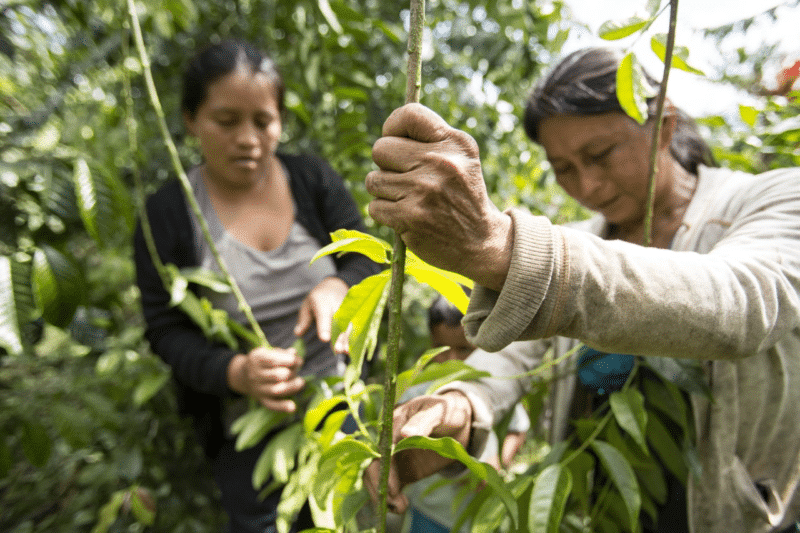

It’s fair to say that, over the past few decades, climate change has been framed as a purely environmental issue. But as our understanding of its impact grows, it’s becoming clearer that it’s a women’s issue too. The UN states that women are more likely to be affected by climate change than men, and that up to 80% of those displaced by climate change are women. This means that women have a key role to play in the global fight against climate change.
The good news is that achievable solutions are all around us. Nearly 40% of the world’s energy consumption comes from buildings, and by using green building principles and smarter, more efficient materials, the World Green Building Council believes we have the power to reduce that percentage to 0%.
That’s why we’re working towards 100% net zero carbon buildings by 2050, and it’s also why the focus of this year’s Word Green Building Week (WGBW) is homes. Reducing the energy consumption of buildings isn’t just a policy issue for governments – it’s a change we’re all empowered to make. Our homes are where we sleep, eat and build our lives, so it makes sense that they’re also the first place most of us can have our biggest impact.
We’re using WGBW to drive a significant reduction in the carbon footprint of our homes. If we all reduced our home’s energy consumption by 20%, that would deliver a savings of just over half a metric ton of CO2 per household (the equivalent of 1,277 miles of driving, or 21.5 propane cylinders used for home barbecues). Women are going to play a key role in achieving this reduction by leading some of the world’s most exciting green building projects, and by driving change through the Green Building Councils, since 50% of our most established Green Building Councils are run by women.
But the real difference will be made in ordinary households. Women’s global purchasing and economic power of is building, with studies predicting that women’s global income will grow to $18 trillion in 2018. That gives them the power to choose greener homes and create a more sustainable future for their families and communities.
Of course, greener lifestyles are often touted as expensive or out of reach for many, but the truth is that small changes have a bigger impact than most people realize. It doesn’t need to be a state-of-the-art house built from the ground up, or a frills-free log cabin in the woods. It really can be the house you live in right now by making small, smart changes like changing all of the light bulbs in your house to LEDs, or taking showers instead of baths to save on water heating. You can also build up your eco-efforts over time, like switching to a renewable energy provider or upgrading to energy efficient appliances and, one day, installing solar panels. People are often surprised when they find out just how much of a difference these more sustainable measures make. According to the New Zealand Green Building Council, green-certified homes are up to 38% more efficient than homes built to the standard national building codes.
And it’s not just good for the climate. Research shows that there’s even a strong business case for better indoor air quality, defined by low concentrations of CO2 and pollutants, and high ventilation rates. In a study carried out by WorldGBC’s Better Places for People project, a survey of 200 Canadian building owners showed that 38% of those who reported increased value replied that healthy buildings were worth at least 7% more than normal ones. Further, 46% said they were easier to lease, and 28% said they commanded premium rents.
Every week, we hear stories of people switching easily to a greener and more sustainable way of living. What’s more, building green is good for our economies. In cities across the US, green construction is projected to generate 3.3 million jobs between 2015 and 2018. Meanwhile, in Australia, 420,000 people are moving into sustainable communities – that’s half the population of its capital city Canberra – and reaping the multiple benefits.
So, while a goal of 100% net zero carbon buildings by 2050 may seem ambitious, it is achievable – and every individual has a role to play in getting us there. We’re urging women around the world to make a #HomeGreenHome Promise to take action by making the changes they can while spreading this message. We’re urging women to make choices that will cut energy use by 20% over a year and to tell colleagues, family and friends about #WGBW2018, and be part of the solution for a sustainable built environment.
 Terri Wills is CEO of the World Green Building Council (WorldGBC), a network of Green Building Councils in over 70 countries. WorldGBC’s mission is to create green buildings for everyone, everywhere, enabling people and planet to thrive today and tomorrow. In March 2017, Terri was named as one of 10 women leading the global push towards climate action, gender equality and social justice for all by Eco-Business. Terri is based in London, UK.
Terri Wills is CEO of the World Green Building Council (WorldGBC), a network of Green Building Councils in over 70 countries. WorldGBC’s mission is to create green buildings for everyone, everywhere, enabling people and planet to thrive today and tomorrow. In March 2017, Terri was named as one of 10 women leading the global push towards climate action, gender equality and social justice for all by Eco-Business. Terri is based in London, UK.


